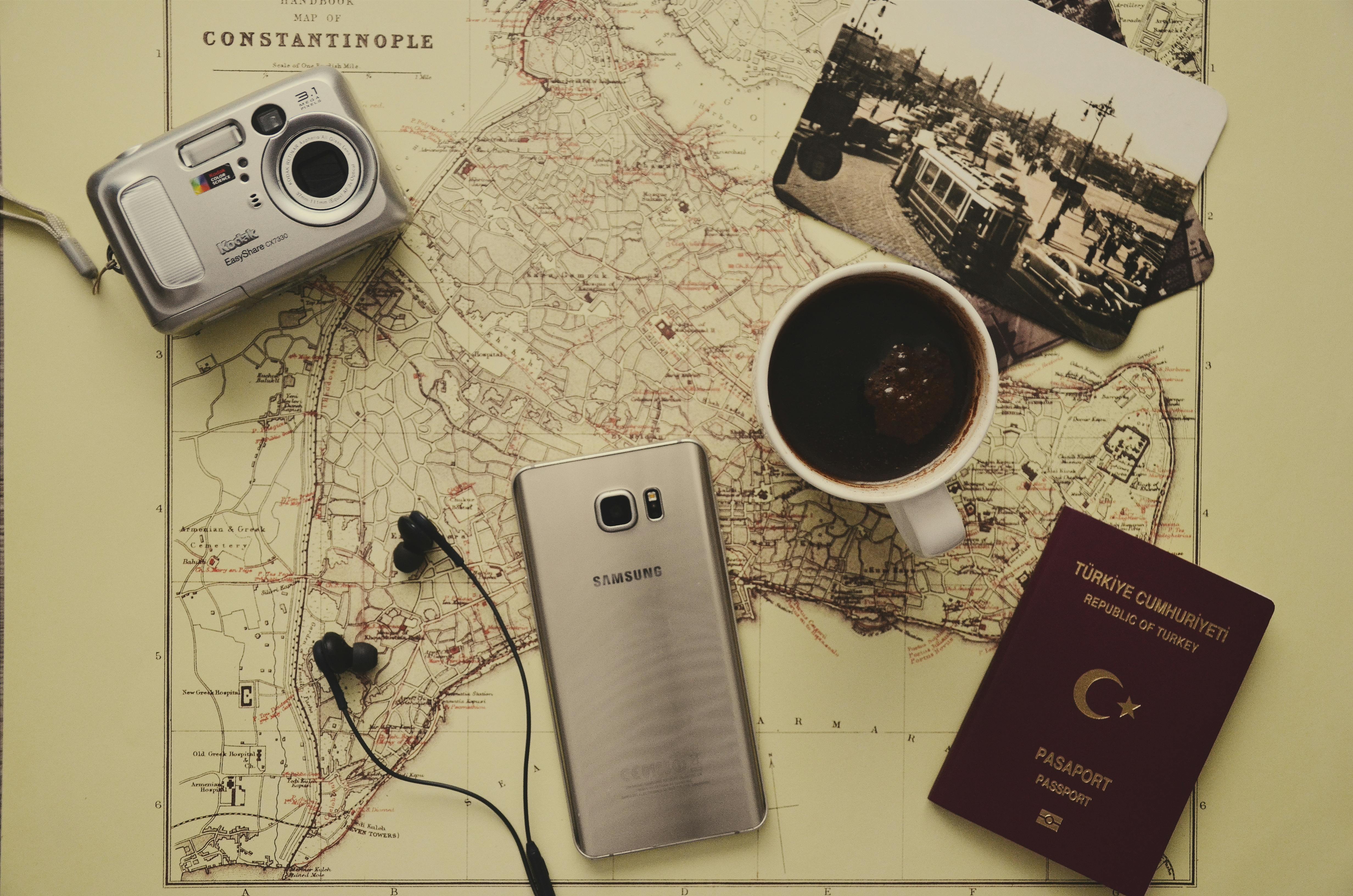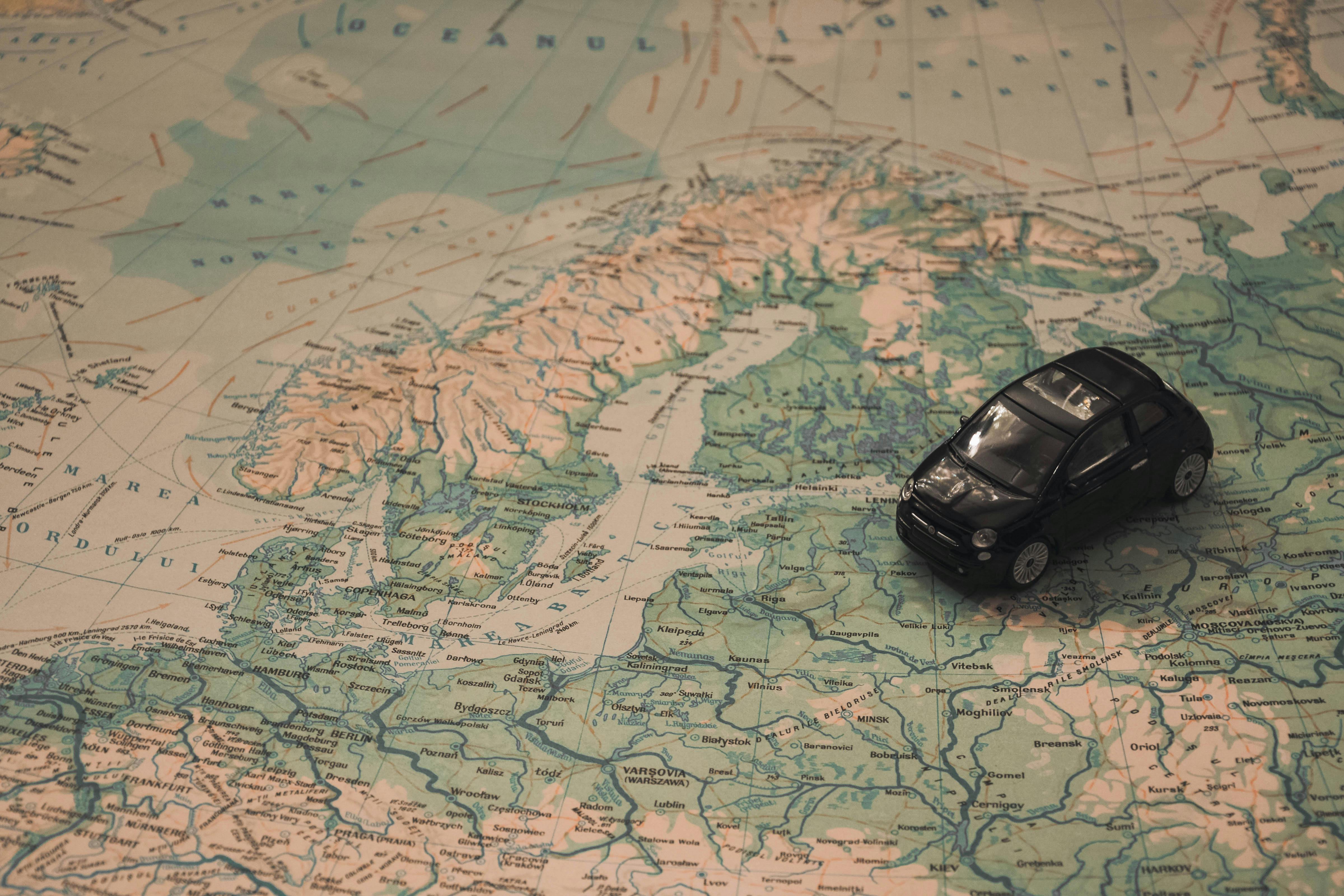Travel Planning Guide 2025: Expert Steps, Mistakes, and Must-Know Tips
If there’s one lesson that’s been hammered into me—after years of zigzagging through airports, deciphering train timetables I couldn’t pronounce, and scrambling for that “perfect” itinerary nobody quite manages to achieve—it’s this: real-world travel planning is messy, exhilarating, fallible, and surprisingly transformative. The idea that you can just “book a ticket and go” works pretty well in your late teens, but let’s get real—by the time you’re budgeting, syncing schedules, tracking Visa requirements, and trying to balance a love of adventure with real safety, you need something much more robust. That’s precisely what this guide aims (sometimes a bit stubbornly) to provide: not a rigid prescription or fantasy wish-list, but an actually useful, step-by-step, mistake-friendly travel planning framework for 2025 and beyond. Even as I write this, revisiting my own missteps, surprises, and genuine facepalm moments from the field, I can say: the journey to planning smarter, safer, more meaningful travel never really ends.
Why Travel Planning Is Different in 2025
Let’s put this right up front: Travel in 2025 is not what it was even five years ago. Just three years ago, we were all still grappling with border closures and unpredictable flight rules. These days, flexible booking, digital vaccination certificates, and AI-powered visa checks are the new normal, not optional upgrades. “Booking ahead” basically means wrestling with dynamic pricing algorithms, which, honestly, I wish my high school math teacher had covered somewhere between algebra and existential dread. Seasoned travelers are now as obsessed with cancellation policies and mobile apps as they are with packing cubes—a real shift from the old passport-and-prayer mindset1.
But what really strikes me is that the new travel landscape hasn’t killed spontaneity; it’s just made thoughtful, flexible planning absolutely crucial. Instead of asking “Where can I go this weekend?”, most of us are now asking, “What’s the smartest way to make my bucket-list dreams match reality—while navigating a shifting rulebook?”
Smart travel planning in 2025 doesn’t mean over-scheduling. It’s about understanding what you value most, building in safety nets, and leaving just enough room for serendipity.
Setting Realistic Intentions and Dreams
Before you so much as click “Explore” on Skyscanner or scroll Instagram for dreamy train rides, I’d urge you: get brutally honest about your intentions, resources, and boundaries. Frankly, my most carefree trips are the ones I planned most obsessively—because that intentionality freed me up for surprise opportunities, not because it dictated what I could or couldn’t enjoy. This starts with three crucial questions:
- What am I really craving from this experience—rest, adventure, connection, or simply escape?
- What’s my actual, realistic budget—not the fantasy budget, but the real-life limit before FOMO regret hits?
- What are my non-negotiables for health, work, family, and comfort?
Funny thing is, it’s almost always my pre-trip “soul searching” that saves me from over-research paralysis later on. Three years ago, a trip to Portugal that I’d planned entirely around vintage tram rides almost derailed when I realized I actually needed a break from cities. If you don’t intentionally flag your priorities upfront, you’ll be tempted by every airline sale, eatery, and “hidden gem” list thrown your way2.
Budgeting: The (Surprisingly Personal) Right Start
Let’s take a second here because most guides treat “create a travel budget” like it’s a worksheet, when in reality it’s about psychology as much as spreadsheet discipline. Back in my twenties, I’d routinely underestimate how much “incidental spending” (you know, coffee, museum passes, random festival tickets) could snowball. Here are the five categories I now plan for—every single time—and yes, I’ve learned the hard way not to skip any:
- Transportation (not just flights—think trains, ferries, Ubers, and random taxis after late-night gigs)
- Accommodation (with a real backup for overbooked/unsuitable places)
- Food & Drink (give yourself room for at least two splurges and emergency snacks)
- Activities/Attractions (pre-book the musts, leave room for last-minute finds)
- Safety & Contingency (insurance, medical, visa, unplanned overnights, surprise transit strikes)
And—here’s my big mistake—not building in a “bonus” 15% for unexpected price hikes (something that’s almost certain in this inflationary climate3).
When to Book: Navigating Peak and Off-Season in 2025
Let me step back for a second—timing is every bit as strategic as destination. The waves of “revenge travel” in late 2024 led to a peculiar new normal: peak seasons are shifting, shoulder seasons are more competitive than ever, and some destinations (looking at you, Greece and Japan) are simply maxed out on certain dates4. In my experience, booking windows have absolutely changed:
- Domestic/Short-haul: Book flights 2-4 months out, but monitor prices weekly for flash sales.
- International: For popular months (June-August), aim for at least 5-8 months in advance—especially for “high-demand” events or cherry blossom season.
- Accommodation: Don’t trust backup options to stay available—lock key nights early, use flexible cancellation for the rest.
- Activities/Tours: The best local tours sell out long before flights even get cheap—secure the critical experiences as soon as possible.
Don’t sleep on “shoulder season” (spring and autumn)—lower prices, thinner crowds, and arguably better food and festivals.
During planning for a South Korea trip last fall, I watched hotel rates double while stuck “waiting for better flight deals”—only to learn (too late!) that most Korean locals book Chuseok (Thanksgiving) lodging almost a year out. Lesson learned: Use calendars, mark public holidays, and check local festival dates, not just global tourist guides5.
Country Fact: Japan’s Rail Pass Revolution
As of October 2023, the iconic Japan Rail Pass increased its price by over 65%, but also opened up additional luxury and reserved train options. Tourists now face new rules for purchase windows and eligibility. This has real strategic consequences for itineraries: book as early as possible, compare regional passes, and consider alternative transport options—especially during Japan’s holiday crunch.6
What I should have realized in my first two visits to Japan is that train logistics will absolutely make or break your travel tempo and costs. Trust me, standing in a 7 a.m. Kyoto station line is no way to start a vacation.
Common Planning Mistakes in 2025 (And My Hard-Learned Lessons)
I’ll be completely honest—this is where even pros get tripped up. My mentor always said, “The only thing worse than overplanning is believing you never need a Plan B.”
- Relying too heavily on a single app or aggregator—data glitches absolutely happen.
- Ignoring local regulatory/cultural advisories—especially around visas, local taxes, or social etiquette.
- Assuming “off-the-beaten-path” means fewer tourists or cheaper prices—discovered the hard way on Mallorca last May, when remote coves were flooded with TikTok-driven crowds and price gouging.7
- Overestimating how much you’ll want to move around—a “city each night” itinerary usually means seeing a lot of train stations and not much else.
- Assuming climate averages instead of checking recent patterns—heatwaves, air quality warnings, and wildfires can instantly upend the “perfect” trip.8
Interestingly enough, my favorite travel moments have all emerged from failed plans: a missed ferry in Croatia that became a slow evening talking to locals, or a typo in a booking that led to a last-minute homestay—a reminder that the best planning is never about rigid control.
Leave intentional “blank space” in your plan. Embrace uncertainty, but never skip the fundamentals like insurance, emergency contacts, and up-to-date health advisories.
Safety and Sustainability in the Modern Era
Let’s talk safety—not in a bubble-wrap-the-journey kind of way, but in the responsible, eyes-wide-open sense that travelers absolutely must embrace in 2025. What puzzles me sometimes is how many people still skip travel insurance or ignore local laws entirely because “it’s never been a problem before.” Based on my years doing this, two shattering realities keep emerging:
- Extreme weather, natural disasters, and public health events aren’t exceptions anymore—they’re calendar regulars.9
- Rapidly changing societal, legal, and environmental contexts (think: Venice visitor quotas; Maui’s wildfire impact; Iceland’s new tourism taxes) make “set-it-and-forget-it” trip planning a recipe for, well, disaster.
I’m still learning to align my travel ethics with sustainable practices. It’s tough! I go back and forth on the right balance between exploring new destinations and reducing environmental impact. But here’s what’s not up for debate: more responsible travel is simply non-negotiable for future generations.
- Purchase flexible, comprehensive insurance (read the fine print on exclusions).
- Respect all local rules, especially regarding protected environments and cultural heritage sites.
- Prioritize direct local business support—choose small accommodations and locally run tours.
- Pack reusable essentials and minimize single-use plastics.

Packing and Planning: Proven Checklists from the Field
Okay, let’s be honest: no one actually likes packing. But over the years—usually around 2 A.M. and on the verge of forgetting something truly essential—I’ve experimented with variations of the classic checklist. My own system, as it stands right now, borrows shamelessly from both ultra-minimalist backpackers and comfort-driven planners. Here’s what’s worked, and what totally hasn’t.
This snapshot-style table can help you quickly separate the must-haves from the “why did I haul that?” regrets:
| Absolute Must-Have | Usually Optional | Never Again | Why? |
|---|---|---|---|
| Universal power adapter | Multiple pairs of jeans | Fancy hair dryer | Adapters protect your tech everywhere |
| Waterproof document holder | Bulky guidebooks (use digital) | Overly formal shoes | Lost documents ruin trips—always protect them |
| Quick-dry towel | Multiple pairs of sunglasses | “Just-in-case” large bags | Quick-dry saves weight and space |
| Prescription copies | Specialty toiletries | Cash in unsupported currency | Getting replacements overseas is a nightmare |
Let that sink in: I once carted a hefty, salon-grade blowdryer from Amsterdam to Marrakech—used it once, regretted it forever. Meanwhile, colleagues who swear by “packing light” still find themselves panic-buying socks in Tokyo department stores. The trick? Build your list around your own habits, but adapt from proven principles. Pause here and think about what items have saved (or sabotaged) your travels.
Featured Checklist: The “Missing Essentials” Audit
- Upload digital copies of your passport, visa, prescriptions, and insurance—store both online and locally (but locked).
- Doctor-approved first-aid kit, including basic medications often unavailable abroad.
- At least two payment options (credit and debit)—and confirmation that all cards work in your region of travel.
- Light, multipurpose outerwear for unpredictable weather (think layered instead of “bulky”).
- Power bank and charging cable for every device—yes, really, every one.
Having worked in this field, I can tell you firsthand: the best checklists aren’t generic—they’re battle-tested, edited after each trip, and brutally honest. My current “always include” item is a miniature sewing kit; previously, I would have laughed at myself, but an emergency button repair in Prague changed that forever.
How to Balance Spontaneity and Structure (And Not Lose Your Mind)
I need to revise my earlier point: While structure provides comfort (especially when language barriers and foreign signage hit hard), the single most rewarding moments are almost always unplanned. Let me share a recent scenario: Last year, I plotted a detailed road trip across the Scottish Highlands—routes, castles, the works. Within 48 hours, wild weather had washed out my “must-see” site and rerouted me into an impromptu sheepdog festival instead, complete with local hospitality and zero expectations. The takeaway? Build a backbone plan with three “anchor” experiences per destination, then allow at least half a day each for whatever comes up. You’ll thank yourself later.
- Research and pre-book absolute musts (key attractions, tickets, or health documents)—ideally with flexible or refundable options.10
- Leave wiggle room—use digital maps and local apps to find on-the-spot events or eating spots.
- Adopt an “expect to adapt” mindset—regularly double-check local advisories or closures before each day’s plan.11
Timely communication! From updating friends back home to contacting accommodations or local contacts, consistent check-ins prevent confusion and keep you safe. Use multiple communication apps, and always have a low-data backup method (like SMS or printed info cards).
Travel Tech in 2025: The Tools I Like (and the Hype to Ignore)
As someone who remembers printing out MapQuest directions (yikes), I’m always stunned by the explosion of tech options now available to even casual travelers. It’s not all hype—some tools actually make life easier—but beware the “app for everything” trap.12
- eSim technology: Ditch physical SIM cards—opt for eSims compatible with your carrier for instant connectivity almost anywhere.
- Multi-currency debit cards: Long gone are the days of confusing foreign transaction fees; now you can track (and even freeze) travel money via app.
- Translation apps with offline capabilities: Absolute lifesaver if you wander into WiFi-free zones or rural locations.
- Secure cloud storage for critical documents: Losing access to your passport or insurance can create travel nightmares—don’t risk it.
- Integrated itinerary planners: Use with caution—always keep independent copies in case of glitches or server outages.
Making Your Own Adventure: Bringing It All Together
Here’s the thing though—I’ve written (and rewritten) this guidance more times than I care to admit, and what always occurs to me is just how personal the process becomes. In truth, travel planning is less about rigidly following a checklist and more about learning to trust your own instincts, priorities, and ability to roll with life’s uppercuts. Some of the best advice I ever got came after a series of mishaps in southeast Asia—an airline reroute, lost bag, and more than one bout of food poisoning. What actually saved my trip? Simple kindness from strangers, a crumpled backup copy of my passport, and the ability to laugh (eventually) at my own stubborn overplanning.
As of right now, travel planning in 2025 means balancing new digital tools and data with old-fashioned humility. It’s about reaching out for up-to-date information, holding plans lightly, and making room for chance encounters. Above all, it’s resisting the pressure to be perfect—because the most meaningful journeys grow from the days when everything goes sideways and you simply adapt.13
Take a breath. Set your own priorities. Build for flexibility and safety, then dive in—because no two journeys are ever the same, and the world is still full of places (and people) willing to surprise you if you let them.
Reflect and Take Action
- What’s one travel habit you want to change for 2025?
- Which checklist item do you most often forget—and how will you guarantee it makes the cut this time?
- How can you balance responsible tourism values with your craving for adventure?
Anyone who’s been through both exquisite, meticulously planned trips—and ones that unravel—knows the real badge of a skilled traveler isn’t a perfectly stamped passport; it’s a collection of great stories, resilient habits, and a bunch of lessons learned by doing.14
Sources & Further Reading



